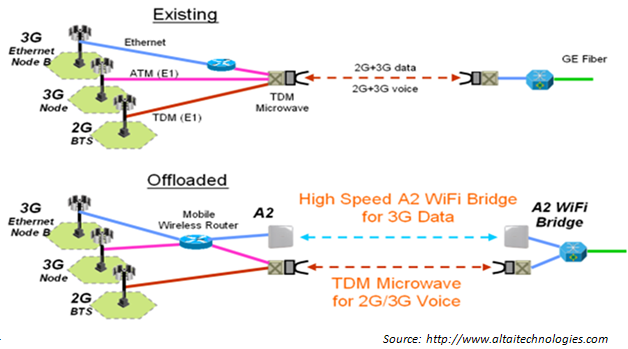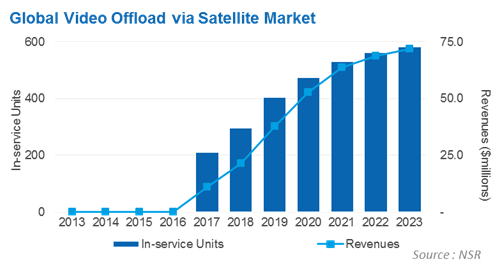The Coming 4K Mobile
Video Explosion
Aug 27th, 2014
by Jose Del Rosario,
NSR
In August 2014, Lenovo, the Chinese
electronics giant, announced details of its Vibe Z2 Pro
smartphone for a September release. Among its many
features, the new flagship offers a 16-megapixel (MP)
rear camera and 4K video recording.
Why should the satellite industry pay
attention to this announcement? Basically because 4K in
a mobile environment is the shape of things to come.
While the satellite backhaul industry is still largely
stuck in 2G or at best 2.5G mode supporting voice and
SMS services in rural and underserved markets, the rest
of the world or users in urban areas are moving to LTE
and are looking at supporting applications that include
4K or UltraHD video. iPSTAR in Asia is somewhat of an
exception where its SoftBank contract is supporting 3G
services for relatively wealthy users in Japan.
Lenovo’s latest is not the first to join
the ranks of an elite category of smartphones with this
capability. Sony's Xperia Z2, Samsung Galaxy SS, Galaxy
Note 3 and LG G3 are all capable of recording 4K videos.
In fact, Sony's Xperia Z2 edges the Lenovo Z2 Vibe Pro
due to its 20.7MP camera. At the writing of this
article, Apple’s much-awaited release of its iPhone6 is
rumored to launch 4K as well with a 13MP camera.
It is one thing to tap into the satellite
industry’s core backhaul market, which again is the
underserved population of the globe. Indeed,
programs like O3b, the other 3 billion, aims
specifically at doing just that - serving the other 3
billion – which has led to a healthy backlog. The
business case of lowering bandwidth costs appears to be
sound and other players like Intelsat with EpicNG will
target this proposition as well.
It is quite another, however, to tap into
an emerging and nascent market, which could provide the
industry with an unrealized or yet unquantifiable
revenue stream. At a minimum, 4K recording on the
latest flagship smartphones as well as upcoming
iterations will lead to 4K content contribution
and distribution to single users, multiple users and
uploading to social media sites that will need to manage
their own 4K video requirements as well. The
diagram below provides the topology of a video offload
network using a Wi-Fi bridge based on an all-terrestrial
solution. The satellite industry can integrate into the
network architecture by providing its own
satellite-based Wi-Fi bridge offering.


In its latest market study,
Wireless Backhaul, Trunking
and Video Offload via Satellite, 8th Edition,
NSR conservatively forecasted the Video Offload via
satellite market to account for less than 600 in-service
units around the globe and approximately $75 million in
annual revenue by 2023. Clearly, the satellite play is
nominal based on NSR’s market projections, likely
tapping into a piggyback market proposition on top of
future “all-satellite-based” wireless backhaul
installations in high ARPU rural markets. However, the
potential is much more, and NSR sees video offload as a
market “wildcard” where in-service units and revenue
streams can be exponentially much higher if the industry
manages to figure out how to serve urban and suburban
markets where the 4K or UltraHD mobile video proposition
is about to explode.
Bottom Line
The satellite wireless backhaul industry
has been relegated to rural and underserved areas while
other services like DTH, Video Distribution and SDARS
have successfully penetrated the highly lucrative urban
markets. In NSR’s view, video offload in urban areas
that is currently being implemented in Wi-Fi networks
can become another service where satellites can compete
effectively due to broadcast economics that have worked
well in DTH, Video Distribution and DARS.
Coming up with a product and service that
competes with and/or complements terrestrial wireless
and fiber is the key to unlocking the potentially huge
revenue flows. With so much capacity expected to be
launched in HTS and perhaps the possibility of an
impending price war taking place, broadcast economics on
HTS platforms may just be the solution that enables the
4K offload wildcard.